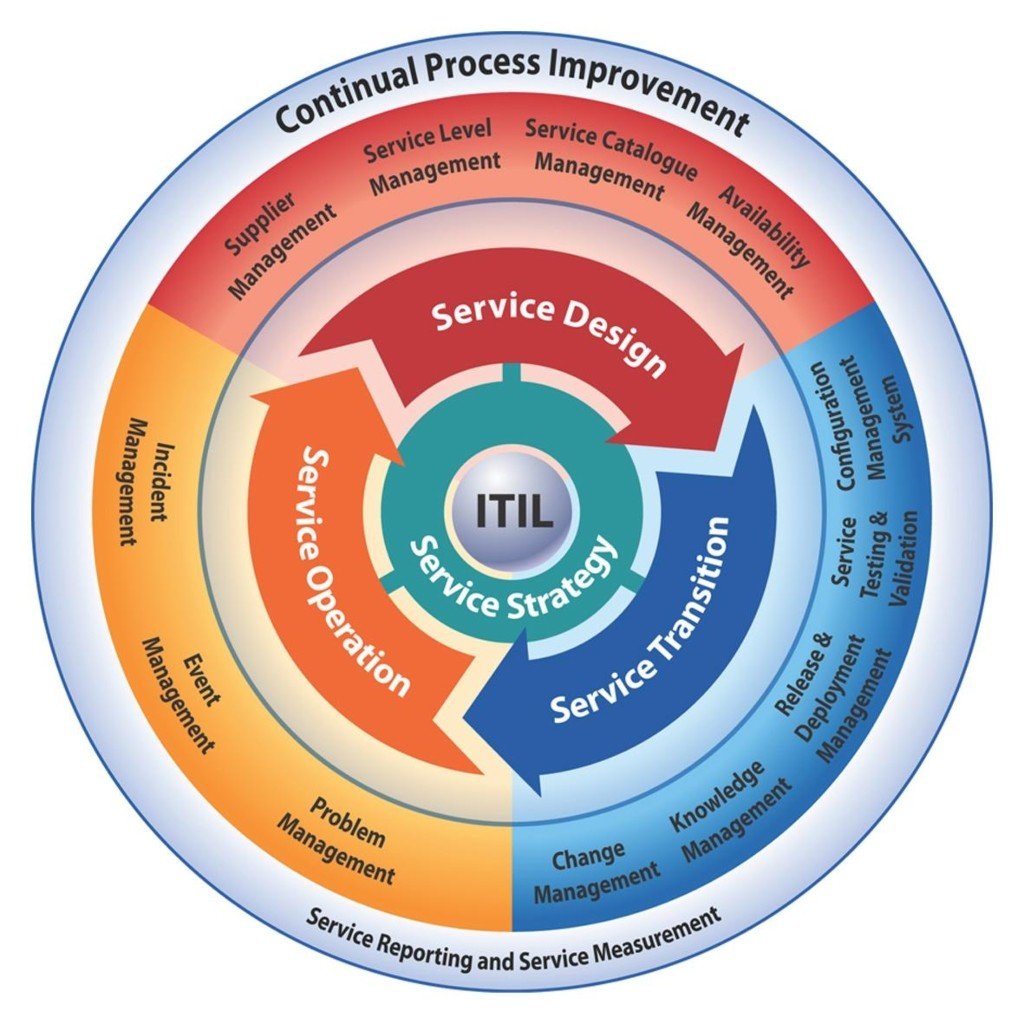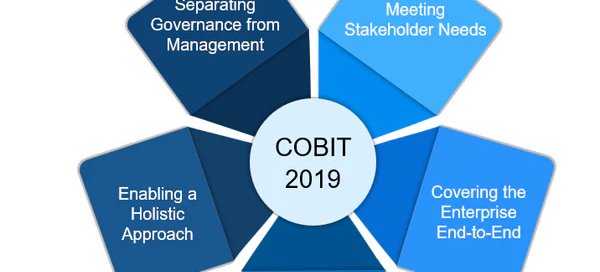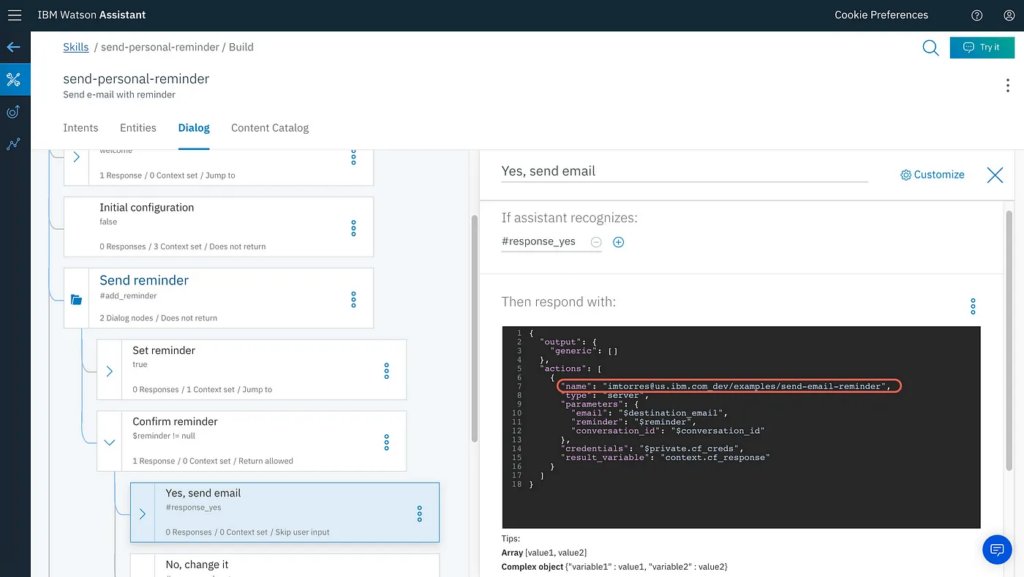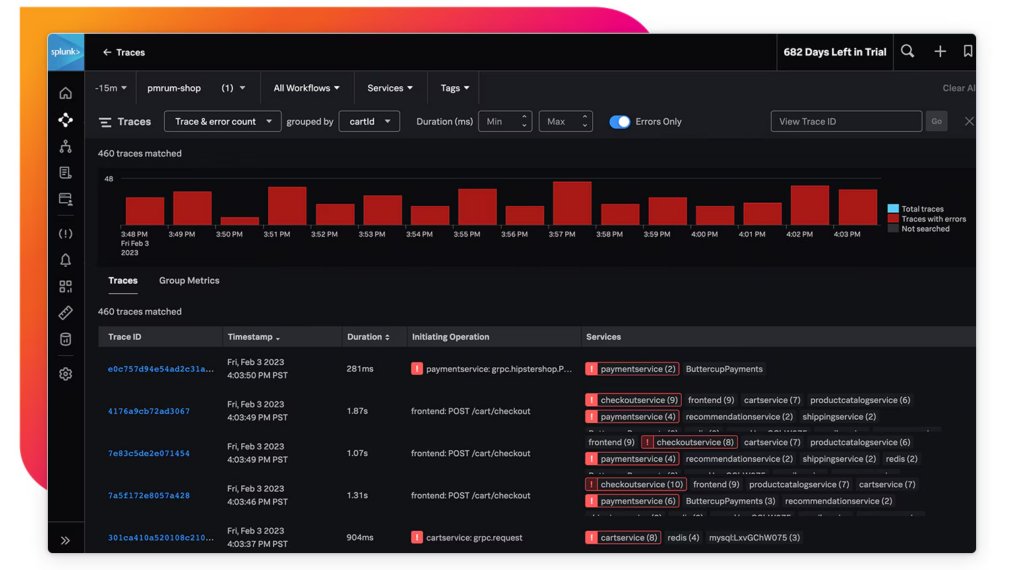The Future of ITSM: Using AI for Smarter, Faster Service

Table of contents
Remember the recent CrowdStrike outage that took down 8.5 million Windows machines? Well, it is a humble reminder of the importance of having proper IT service management in place.
Amazon faced a $34 million hit for just one hour of downtime. Downtime is that uninvited guest that can derail your digital experience. A few minutes of downtime can lead to considerable financial loss, reputational damage, and frustrated users.
AI tools are becoming a common and valuable part of many software applications these days, and ITSM is no exception. Many organizations recognize the potential of artificial intelligence (AI) in IT Service Management (ITSM). AI allows businesses to increase productivity through automation of repetitive tasks, predict issues, and provide intelligent insights.
If you’re reading this blog, chances are you’re one of those businesses eager to explore how AI can transform your IT operations.
Table of Contents
- What is IT Service Management
- Key components of ITSM frameworks
- Challenges faced in traditional ITSM processes
- Benefits of AI in IT Service Management
- Use Cases of AI in ITSM
- Future Trends of AI in ITSM
- The Future of IT Service Management: Why AI Integration Matters Now
What is IT Service Management
Companies depend on ITSM to effectively coordinate the nearly countless processes that drive their day-to-day operations, while making sure that those same processes are providing real value.
For starters, IT Service Management (ITSM) refers to the practices, policies, and procedures employed by organizations to design, deliver, manage, and improve the way IT services are provided to end users.
IT Service Management (ITSM) is about transforming IT, from back-office operations to proactive service providers. It’s not just about keeping the tech running; it’s about understanding what people need and making sure that technology supports the bigger goals of the business.
Key components of ITSM frameworks
The most widely adopted ITSM frameworks are ITIL (Information Technology Infrastructure Library) and COBIT (Control Objectives for Information and Related Technologies).
While each offers guidance on best practices, they focus on different aspects of IT management. Let’s have a quick look:
ITIL
ITIL, or Information Technology Infrastructure Library, is a popular framework for IT Service Management (ITSM) that’s used around the world. It gives organizations a collection of best practices to help their IT departments align with business goals.
Taking a comprehensive approach, ITIL helps businesses create a stable IT environment that can grow and adapt, while also managing risks and improving customer relationships.
Some examples of companies that are successfully using this framework:
1.Oracle applies ITIL to align its service management processes with industry standards.
2. Vodafone uses ITIL 4 to shift towards a service-oriented approach, improving efficiency and standardization across teams.
3. Marriott Internationaluses ITIL to develop a supplier relationship management framework and make sure its IT services align with global business objectives.
The framework has five key stages, collectively called the ITIL Service Lifecycle:
- Service Strategy: Identifying the services the organization will provide and outlining the capabilities needed to deliver them effectively.
- Service Design: Creating new IT services or adapting existing ones to address current and future business requirements.
- Service Transition: Overseeing the rollout of new or updated services for a smooth implementation.
- Service Operation: Handling the daily operations of IT services, so that they consistently deliver value to the business.
- Continual Service Improvement: Evaluating and improving IT services and processes to increase efficiency.
COBIT
COBIT (Control Objectives for Information and Related Technologies) is a globally recognized framework that helps IT business process managers align IT goals with business objectives. It provides a structured approach to delivering value to the organization while improving risk management practices related to IT processes.
Here are some examples of companies using COBIT framework:
- Dubai Customs uses a single integrated governance framework to deliver value across the entire organization
- The European Network of Transmission System Operators for Electricity (ENTSO-E) used COBIT5 framework to implement their governance program for enterprise IT (GEIT).
COBIT 5 evolved to COBIT 2019, covering 40 processes instead of 37 within the IT Governance framework. The COBIT 2019 framework establishes a common language for IT professionals, compliance auditors, and business executives, facilitating effective communication regarding shared IT goals, controls, objectives, and outcomes.
The COBIT 2019 Framework is built on six principles for managing enterprise IT, helping organizations achieve business success. These governance principles include:
- Meeting Stakeholder Needs: Organizations should provide value to stakeholders—such as customers, business partners, and employees—while addressing their needs in IT governance decisions.
- Enabling a Holistic Approach: Businesses need to understand the various components of the IT governance system and take a comprehensive approach to integrate them with business functions for operational excellence.
- Implementing a Dynamic Governance System: Organizations should establish flexible and adaptive governance processes that can quickly respond to changing circumstances and emerging risks.
- Separating Governance from Management: The framework differentiates between governance and management. Governance focuses on identifying stakeholder needs and aligning IT with business objectives, while management oversees day-to-day IT activities.
- Tailoring to Enterprise Needs: Organizations must adapt the governance system to fit their specific requirements, necessitating an understanding of business needs to create a suitable and sustainable governance framework.
- End-to-End Governance System: Organizations should concentrate on a unified system that aligns IT with all business functions, maximizing business value through improved performance.
Challenges faced in traditional ITSM processes
Despite the benefits, traditional ITSM processes often face a set of recurring challenges, particularly as the business environment evolves.
Lack of flexibility
Traditional ITSM frameworks, especially ITIL, are structured and process-heavy. In modern enterprises, the need for agility and rapid change sometimes conflicts with these established processes. The difficulty of adjusting ITSM practices to accommodate methodologies such as Agile or DevOps can limit an organization’s ability to innovate and respond quickly.
Slow response to incidents
In many traditional ITSM setups, the incident management process can be slow and cumbersome. Manually handling tickets, isolated teams, and lack of automated tools often result in delays, even for high-priority incidents. This slows down recovery times and may result in lower customer satisfaction, especially for businesses where downtime translates to lost revenue.
Isolated approach
ITSM frameworks often lead to the grouping of tasks between different IT teams (e.g., development, operations, and security). This approach hinders cross-team collaboration and can create communication barriers, leading to longer resolution times. As businesses shift towards integrated models like DevOps, the traditional boundaries between teams need to dissolve, but traditional ITSM frameworks often resist this change.
High implementation and maintenance costs
Implementing and maintaining traditional ITSM systems can be costly. The requirement for specialized training, certifications (like ITIL),and the deployment of sophisticated tools add to the operational costs. Smaller businesses, in particular, may find it challenging to adopt these frameworks without straining their budgets.
Resistance to change
The focus on established processes and lengthy documentation can make it difficult for organizations to move towards more modern, agile methods. This often results in organizations being slow to adopt emerging trends like automation, cloud computing, or DevOps, which are critical to maintaining a competitive edge.
Benefits of AI in IT Service Management
According to an article published in the Asian Journal of Computer Science and Technology in 2023, AI is becoming the go-to solution for smarter decision-making, cutting costs, and improving efficiency.
Whether it’s automating routine tasks or spotting patterns and anomalies, AI helps IT teams work faster and more effectively—letting them focus on what matters while the system takes care of the rest.
Below are some key benefits of AI in ITSM:
Improved productivity
One of the most significant advantages of AI in ITSM is the automation of repetitive tasks. AI-driven automation can take over repetitive tasks such as ticketing, incident logging, and categorization, freeing up IT staff to focus on more complex and strategic initiatives.
Better user experience
AI improves the user experience, offering more responsive and personalized support. AI-powered chatbots and virtual assistants have become increasingly popular in ITSM, providing users with instant, 24/7 support. These virtual agents can resolve common IT issues—such as password resets or software troubleshooting—without needing human intervention.
Data-driven decision making
AI in ITSM enables organizations to make data-driven decisions through predictive analytics and machine learning. IT environments generate vast amounts of data, from service tickets and system logs to performance metrics. AI systems can analyze this data in real-time, identifying trends, patterns, and anomalies that may indicate underlying issues.
It can also optimize resource allocation. AI tools can recommend the optimal deployment of IT staff and resources, making sure that high-priority incidents are resolved quickly and efficiently.
Cost Reduction
AI-driven automation and efficiency improvements directly impact operational costs in ITSM. AI reduces the need for a large IT support staff, lowering labor costs.
AI tools also reduce costs by minimizing downtime and service disruptions. Predictive analytics helps prevent major incidents before they occur, which can be especially costly for businesses that rely heavily on IT systems.
Use Cases of AI in ITSM
The integration of Artificial Intelligence (AI) into IT Service Management (ITSM) is changing the way organizations manage and deliver IT services. Let’s explore some key AI use cases in ITSM.
Streamlining ticket management
One of the most common pain points in ITSM is ticket management. Traditionally, tickets were manually logged, categorized, and assigned to the appropriate teams. This process can be slow and prone to errors, leading to delays in resolving critical incidents.
Companies like ServiceNow have integrated AI-driven ticket classification into their platforms. Using machine learning, the system analyzes ticket content and automatically assigns it to the correct department based on past trends and ticket categories. This reduces the time technicians spend sorting tickets and allows them to focus on resolving issues.
AI also prioritizes tickets based on urgency, making sure that critical incidents are addressed first. This level of automation allows organizations to handle higher ticket volumes while reducing response times and improving service quality.
Intelligent email responses
IT service teams can find managing the flood of support emails daunting. AI-driven intelligent email response systems can interpret incoming emails, extract key information, and generate accurate responses—all without human intervention.
IBM Watson offers a prime example of this in action. Watson can analyze incoming emails and determine the nature of the request, using natural language processing (NLP).
For routine queries, it sends automated responses or directs users to relevant resources. In cases requiring further assistance, it forwards the email to the appropriate technician, along with a recommended response or next steps. This reduced the workload on IT support teams while ensuring that users received timely and relevant answers to their issues.
Enhanced service desk operations
Service desks are at the heart of ITSM, and AI can significantly enable better efficiency and effectiveness. AI-powered chatbots and virtual assistants can handle many user requests, resolving common issues without human intervention and providing instant support.
Cognizant, a global IT services provider, implemented AI-driven virtual assistants to manage service desk operations. These AI bots help users troubleshoot issues like password resets, software installations, or system configuration, all without involving a technician. If the bot cannot resolve the issue, it escalates the request to a human agent, equipped with detailed context about the user’s problem.
This helps with faster resolutions, reduces the workload on service desk staff, and improves user experience by providing immediate responses to common problems.
Automated follow-Ups
In IT Service Management, follow-ups are crucial to check if tickets are being resolved promptly and users receive timely communication. However, manually managing these follow-ups can be inefficient and prone to oversight. AI automates this process, so that no request slips through the cracks and that IT teams stay on top of open tickets.
For instance, an AI-based IT service provider uses AI-driven automation to track open tickets and send follow-up emails to users whose tickets have been unresolved for a certain period. This automated follow-up system prompts users to provide additional information or confirm if the issue has been resolved. It also sends reminders to IT staff to ensure that critical tickets do not fall through the cracks.
Automated follow-ups can help organizations improve customer satisfaction and service consistency while reducing the administrative burden on IT teams.
Insights and analytics
AI’s ability to analyze massive datasets allows ITSM teams to gain valuable insights and make decisions. AI-driven analytics can identify trends, predict potential issues, and recommend preventive measures, helping organizations improve service delivery and avoid future problems.
A compelling example of AI-powered analytics in action is seen in Splunk’s IT Service Intelligence platform.
Splunk uses machine learning algorithms to analyze IT data, such as system logs and performance metrics, in real-time. The platform identifies anomalies, such as performance degradation or security vulnerabilities, and alerts IT teams before these issues become critical. Splunk enables organizations to take a proactive approach to IT management, reducing downtime and improving overall service quality.
Reducing Human Error
Human error is one of the leading causes of IT incidents, whether it’s a misconfiguration, a missed step in a process, or an incorrect ticket categorization. AI can minimize these errors by automating repetitive and complex tasks, for greater accuracy in IT operations.
A real-world example comes from Unisys, which uses AI to automate IT service processes that are traditionally error-prone. For example, AI handles the configuration and patch management of IT systems, making certain that all software updates are applied consistently across the enterprise.
This reduces the likelihood of configuration errors that can lead to system vulnerabilities or performance issues. Additionally, AI-based systems ensure that tickets are accurately categorized and resolved, significantly reducing the risk of human error in ticket handling.
Future Trends of AI in ITSM
Artificial Intelligence (AI) is transforming IT Service Management (ITSM),but the future holds even more exciting possibilities. As AI technologies become more sophisticated, they will reshape the way IT services are delivered, making processes smarter and increasingly proactive.
Some of the key trends we can see with AI in play are:
- Autonomous IT Operations (AIOps)
Expect to see a greater push towards automating end-to-end IT operations. This means everything from monitoring system performance to resolving incidents could happen without human intervention. AIOps will use machine learning and big data to analyze IT data, spot patterns, and take corrective actions on its own. This will pave way for more predictive and preventive operations that reduce downtime and keep services running smoothly.
- Predictive and Prescriptive ITSM
This is a trend where a system not only predicts incidents but also recommends the best actions to avoid them. This shift will allow IT teams to move from reacting to problems to proactively managing services, significantly reducing disruptions. Prescriptive AI models will provide guidance on optimal solutions, making complex decisions in areas like change management and resource allocation much simpler.
- Hyper-Automation
The trend of hyper-automation will broaden the scope of ITSM tasks that can be automated, including intricate workflows and multi-step service requests. With the combination of Robotic Process Automation (RPA) and AI, many tasks can be handled with minimal human involvement, drastically speeding up service delivery. Intelligent self-service options will also make it easier for users to resolve complex technical issues without needing to reach out for help.
- Continuous Service Improvement
There will be a strong focus on ongoing improvement within ITSM processes. AI will be able to analyze performance data to recommend enhancements in workflows and service delivery. As these systems learn from feedback, they’ll adapt and improve over time, leading to better outcomes.
The Future of IT Service Management: Why AI Integration Matters Now
While traditional service management approaches still dominate many organizations, forward-thinking enterprises are already witnessing the profound impact of AI-powered solutions. The numbers tell a compelling story: system outages like CrowdStrike’s recent incident affecting 8.5 million Windows machines, or Amazon’s staggering $34 million loss from just one hour of downtime, underscore the critical nature of modern ITSM solutions.
The distinction between market leaders and laggards will increasingly be defined by their approach to AI-enabled service management. This isn’t merely about automating tickets or deploying chatbots—it’s about fundamentally reimagining how IT services adapt, learn, and evolve with your business needs. From AIOps to hyper-automation, organizations that harness these capabilities are positioning themselves for operational excellence in an increasingly complex digital landscape.
Consider this: As we move toward autonomous IT operations, the question isn’t whether to adopt AI-powered ITSM, but how quickly you can transform your service delivery to maintain competitive advantage.
The future belongs to those who act now. Experience the next evolution in service management with Hiver’s AI-powered ITSM solution. Try Hiver free for 7 days.





































